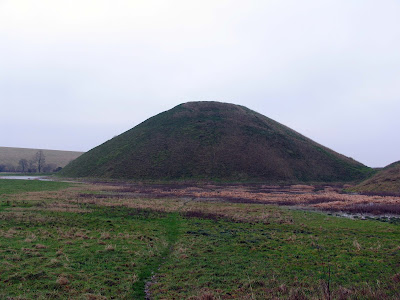Suzie Thomas and Bonnie L. Pitblado have written a 'Debate Article' for
Antiquity: '
The dangers of conflating responsible and responsive artefact stewardship will illicit and illegal collecting'. They create a 'straw-man' suggesting that some archaeologists assert 'all private owners of cultural material ... have ill-intent or engage in illegal behaviour'. Take, for example, the pharmaceutical millionaire Sir Henry Wellcome whose collection of Egyptian antiquities form the core of the Egypt Centre at Swansea University. The collection is drawn, in part, from his share of finds from the archaeological excavations that he sponsored, as well as from purchases on the market, often from old (and named) collections. Thomas and Pitblado do not provide any evidence to support their (flawed) assertion (made in the abstract for their article). Which archaeologists have made this universal claim?
Their opening paragraph suggests that 'early archaeological expeditions purchased artefacts for museum collection to complement material from their excavations'. Their citation points to excavations in Egypt but does not specify a time period. If we look to Greece, the early excavations of the British School at Athens (from its opening in 1886) would not support this claim. There is somehow a lack of clarity in what Thomas and Pitblado are trying to assert.
The focus of the paper is about the relationship between 'private artefact' collectors and archaeologists, and specifically 'to counteract the damage done by stereotyping all members of the collecting public and the archaeologists who work with them'.
Let us imagine a largely unexcavated archaeological site with a Roman component in a rural part of England, say East Anglia. For the sake of argument let us say that the site was 'investigated' by metal-detectorists. Did they have permission from the local landowner? Was any damage sustained to the archaeological record? Was any contextual information lost?
But let us take this a step further, imagine that a set of impressive Roman bronzes was found and then removed from the UK. These bronzes were then sold by, say, a Manhattan gallery to a private artefact collector who keeps the figures in their apartment and occasionally loans the objects for an exhibition in, say, a university museum. Would Thomas and Pitblado commend the private collector for 'saving' and 'sharing' the bronzes? What if the collector claimed to have purchased the bronzes 'in good faith' through the 'licit market'? Would Thomas and Pitblado find such an explanation acceptable? Would they feel able to include the bronzes in an account of Roman East Anglia? How would such a scenario relate to their claim, 'we do not condone either the illicit trade in antiquities or the collection of artefacts in violation of any law'?
Would Thomas and Pitblado suggest that this rifling of this (imaginary) Roman site was acceptable because those conducting the search were taking exercise 'outdoors', 'socialising', and taking an interest in the latest technology? (These specific examples are taken from the section, 're-nuancing motivations'.)
Who, in this fictional example drawn from eastern England, are the individuals 'contributing to archaeological knowledge'?
Thomas and Pitblado go on to cite the SAA statement encouraging the recognition of 'the importance of privately held collections as potential sources of information about sites, and the irreplaceable loss of this information when responsible and responsive stewards are ignored or treated disrespectfully'. As it so happens I am writing about a high profile private collection that contains material that I suspect comes from a specific site: but the information either has been lost or has not been disclosed. The result is that the objects are not a potential source of information about a specific site. Indeed the conclusion is that there has been an 'irreplaceable loss of ... information'. This aspect of knowledge destruction is left unaddressed by Thomas and Pitblado.
Thomas and Pitblado conclude: 'When we work with and listen to others, it is better for everyone—and it is better for archaeology'. Are they
listening to those, such as
Sam Hardy, who are raising
genuine concerns about the destruction of the archaeological record?





















